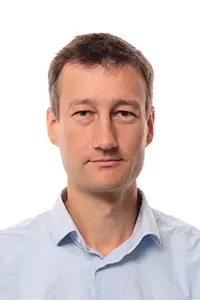René Capell
Ph.D., Group manager Forecast & observation.

René Capell
Role in team
- Group manager of Forecast and observation
- Scientist
- E-HYPE maintainer
- HYPEtools developer
- HYPEwiki maintainer
Expertise
- Rainfall-runoff processes
- HYPE model application and analysis (Q+WQ)
- Climate impact analyses
- R programming
Professional records
- H-index: 9
ROBIN
S. Turner, J. Hannaford, L. J. Barker, G. Suman, A. Killeen, R. Armitage, W. Chan, H. Davies, A. Griffin, A. Kumar, H. Dixon, M. T. D. Albuquerque, N. Almeida Ribeiro, C. Alvarez-Garreton, E. Amoussou, Berit Arheimer, Y. Asano, T. Berezowski, A. Bodian, H. Boutaghane, Réne Capell, H. Dakhaoui, J. Danhelka, H. X. Do, C. Ekkawatpanit, E. M. El Khalki, A. K. Fleig, R. Fonseca, J. D. Giraldo-Osorio, A. B. T. Goula, M. Hanel, S. Horton, C. Kan, D. G. Kingston, G. Laaha, R. Laugesen, W. Lopes, S. Mager, M. Rachdane, Y. Markonis, L. Medeiro, G. Midgley, C. Murphy, P. O'Connor, A. I. Pedersen, H. T. Pham, M. Piniewski, B. Renard, M. E. Saidi, P. Schmocker-Fackel, K. Stahl, M. Thyer, M. Toucher, Y. Tramblay, J. Uusikivi, N. Venegas-Cordero, S. Visessri, A. Watson, S. Westra, P. H. Whitfield
Abstract
Human-induced warming is modifying the water cycle. Adaptation to posed threats requires an understanding of hydrological responses to climate variability. Whilst these can be computationally modelled, observed streamflow data is essential for constraining models, and understanding and quantifying emerging trends in the water cycle. To date, the identification of such trends at the global scale has been hindered by data limitations - in particular, the prevalence of direct human influences on streamflow which can obscure climate-driven variability. By removing these influences, trends in streamflow data can be more confidently attributed to climate variability. Here we describe the Reference Observatory of Basins for INternational hydrological climate change detection (ROBIN) - the first iteration of a global network of streamflow data from national reference hydrological networks (RHNs) - comprised of catchments which are near-natural or have limited human influences. This collaboration has established a freely available global RHN dataset of over 3,000 catchments and code libraries, which can be used to underpin new science endeavours and advance change detection studies to support international climate policy and adaptation.
Rational gaze
Conrad Brendel, Réne Capell, Alena Bartosova
To tame a land
Conrad Brendel, Réne Capell, Alena Bartosova

